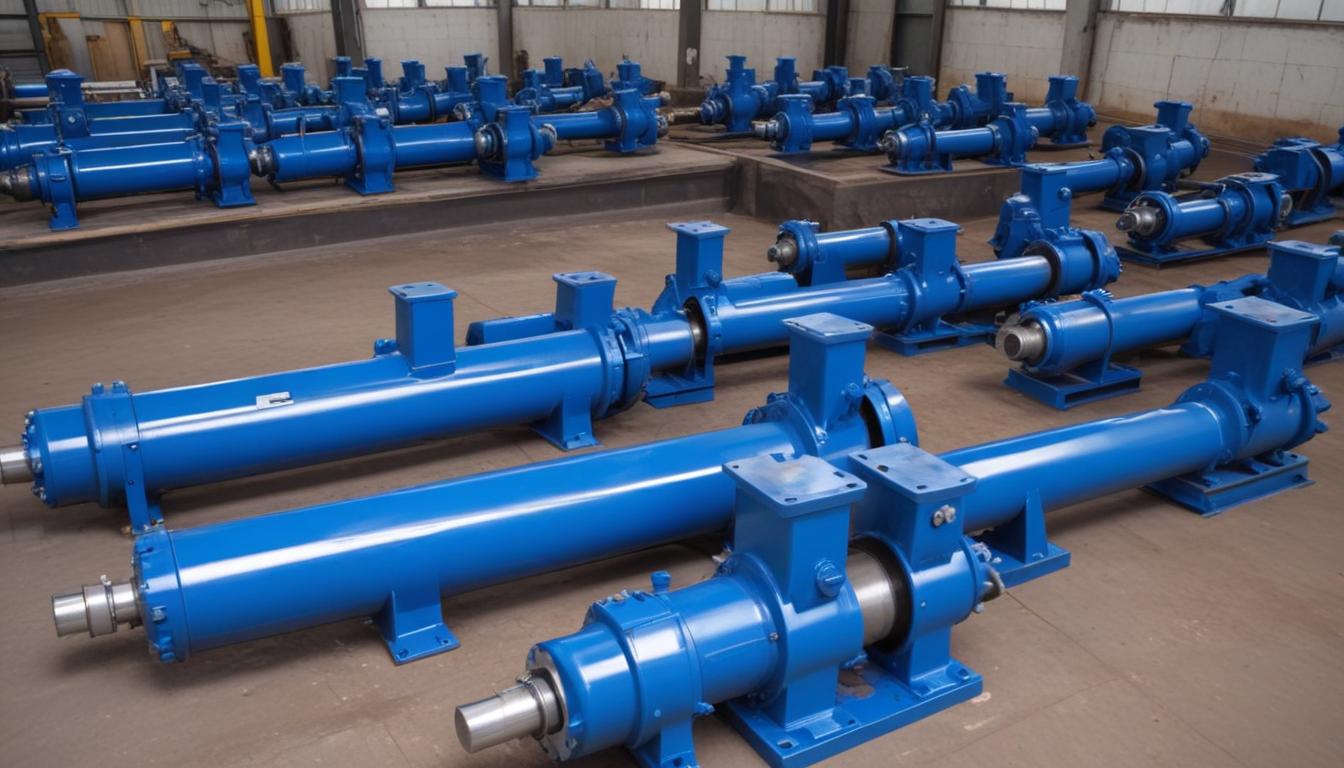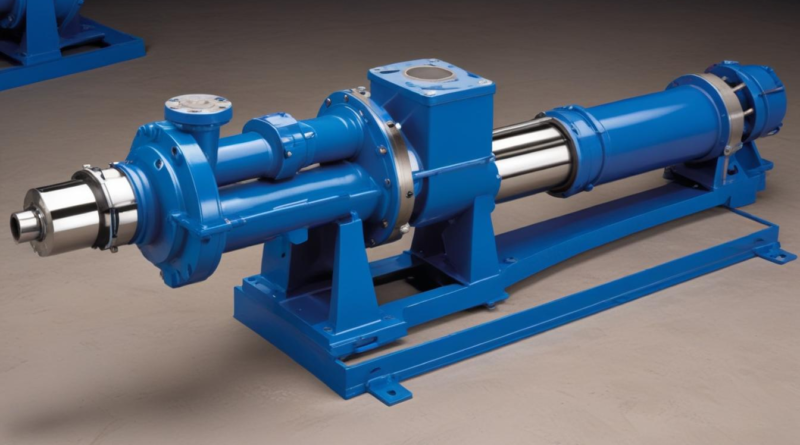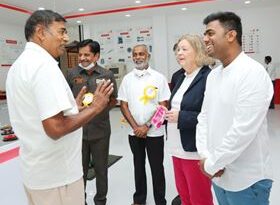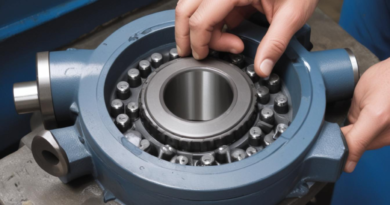Improving the reliability of progressive cavity pumps
To enhance the performance of progressive cavity pumps, understanding the key factors that contribute to their efficiency and effectiveness is essential. These pumps are renowned for their ability to handle viscous fluids and deliver consistent flow rates. However, achieving optimal performance involves a comprehensive strategy that focuses on several critical aspects.
Firstly, the selection of the appropriate materials for the pump components plays a vital role in the reliability of progressive cavity pumps. High-quality, corrosion-resistant materials can significantly extend the lifespan of the pump, especially in harsh operating conditions. It is important to evaluate the fluid characteristics, including viscosity, temperature, and chemical compatibility, when choosing materials.
Another important consideration is the pump design. Ensuring that the pump is correctly sized for the application will help mitigate operational issues such as cavitation and excessive wear. It is recommended to conduct thorough flow analysis to determine the best configuration. This analysis should also include a review of the pump geometry, as variations can lead to performance discrepancies.
Regular monitoring of the pump’s operational parameters is essential for maintaining efficient performance. Implementing condition monitoring techniques, such as vibration analysis and temperature monitoring, can aid in identifying potential issues before they escalate into failures. Utilizing these technologies facilitates timely interventions that enhance both reliability and performance.
Moreover, proper installation and alignment of progressive cavity pumps cannot be overstated. Misalignment can lead to increased wear and tear, ultimately impacting the pump’s efficiency and lifespan. Therefore, following manufacturer guidelines for installation is crucial to prevent complications and ensure optimal performance.
Finally, the implementation of predictive maintenance practices plays a significant role in enhancing the reliability of these pumps. Establishing a routine maintenance schedule that includes inspections, cleaning, and adjustments can prevent unexpected failures and support continuous operational efficiency.
By focusing on the above strategies, engineers and pump users can significantly improve the performance of progressive cavity pumps, leading to enhanced operational reliability and longevity in demanding applications.
Common Failures and Their Causes
Progressive cavity pumps, while highly efficient in their applications, are susceptible to a range of common failures that can significantly impact their reliability and operational effectiveness. Identifying these failures and understanding their root causes is crucial for engineers and users aiming to enhance pump performance.
Some of the most prevalent failures in progressive cavity pumps include:
- Mechanical Seal Failure: The seals are critical for maintaining the integrity of the pump. Frequent mechanical seal failures can occur due to factors such as improper installation, misalignment, and excessive pressure differentials.
- Stator Wear: The stator, typically made from elastomeric materials, can wear down over time due to abrasion, chemical degradation, or thermal damage. This wear leads to decreased efficiency and potential leakage.
- Rotor Damage: The rotor’s interaction with the stator is delicate; any debris or irregularities can cause scoring or pitting. This not only reduces pump efficiency but can also lead to complete pump failure if not addressed promptly.
- Cavitation: Inadequate inlet pressure or improper pump sizing can lead to cavitation, characterized by vapor bubbles forming in the fluid. This phenomenon can cause significant damage to the pump components, particularly the rotor and stator.
- Overheating: Excessive temperatures can result from prolonged operation under heavy loads or inadequate lubrication. Overheating compromises the pump’s materials, leading to failures in seals and stator performance.
Understanding the causes behind these failures is essential for developing effective mitigation strategies.
- Preventive Maintenance: Regular maintenance checks should be instituted to monitor mechanical seals and connectors for signs of wear or misalignment.
- Material Selection: Choosing high-quality materials for the rotor, stator, and seals can enhance the resistance to wear and chemical damage, thus prolonging the life of the pump.
- Flow Analysis: Conducting thorough flow analyses can prevent cavitation by ensuring that the pump is correctly sized for its operational requirements.
- Temperature Monitoring: Implementing systems to monitor temperature can help prevent overheating, offering real-time insights into the operational state of the pump.
- Adjustment of Operating Conditions: Regularly reviewing operating conditions, such as fluid viscosity and pressure levels, can optimize performance and decrease the risk of mechanical failures.
By addressing these common failures and their underlying causes with tailored maintenance and monitoring solutions, engineers can substantially improve the reliability of progressive cavity pumps, enhancing their performance over the long term.
Maintenance Practices for Reliability

To ensure the reliability and longevity of progressive cavity pumps, implementing effective maintenance practices is paramount. Systematic maintenance not only addresses common wear and tear but also proactively prevents failures that could disrupt operations. A structured approach that encompasses routine inspections, component assessments, and system calibrations is essential in maintaining optimal performance.
One critical maintenance practice involves routine inspections. Regularly scheduled checks can help identify potential issues before they escalate into more significant problems. During these inspections, engineers should look for signs of wear, such as:
- Seal integrity: Check for any fluid leakage around mechanical seals as any signs of wear can indicate a compromised seal.
- Stator condition: Inspect the stator for wear patterns or abnormalities that may affect pump efficiency.
- Rotor condition: Look for scoring or pitting on the rotor that might suggest contact with contaminants.
Additionally, a comprehensive cleaning routine is necessary to ensure that any buildup of debris or sludge does not interfere with the pump’s operation. Regular cleaning of the pump assembly and inlet filters helps maintain fluid flow and reduces the risk of premature component failure.
Lubrication also plays a significant role in the maintenance of progressive cavity pumps. Ensuring that all moving parts are adequately lubricated reduces friction and wear, extending the lifespan of the pump. The type of lubricant used must be compatible with the fluid being pumped to prevent chemical degradation.
Implementing predictive maintenance techniques is an increasingly popular method of enhancing reliability. These techniques include:
- Vibration analysis: Monitoring vibration patterns can help detect anomalies that may indicate mechanical issues.
- Temperature monitoring: By keeping track of temperature variations, engineers can prevent overheating conditions that could compromise the pump’s integrity.
- Performance analytics: Regular data analysis of flow rates and pressure can highlight changes in pump performance, allowing for timely interventions.
A well-documented maintenance plan should be established that includes:
- Scheduled inspections: Define intervals for regular checks based on the pump’s operational environment and usage.
- Parts replacement: Outline a plan for proactive replacement of components known to wear quickly, such as seals and stators.
- Troubleshooting procedures: Create detailed protocols for addressing common issues that arise during inspections.
Furthermore, training operating personnel on best maintenance practices is crucial. Empowering team members with knowledge about the importance of maintenance enhances their ability to recognize issues early and respond appropriately.
A robust framework for maintenance practices directly correlates to the reliability and enhancement of progressive cavity pumps, ensuring that they operate efficiently and effectively throughout their service life.
Innovative Technologies for Enhanced Performance
In recent years, significant advancements in technology have emerged to enhance the performance of progressive cavity pumps. These innovations not only address common challenges but also provide engineers and operators with sophisticated tools to optimize pump operations and boost reliability. Understanding these technologies is crucial for those looking to implement cutting-edge solutions in their systems.
One of the notable innovations is the integration of smart sensor technology within pump systems. These sensors continuously collect data regarding vital operational parameters such as pressure, temperature, and vibration. By leveraging Internet of Things (IoT) connectivity, this data can be analyzed in real-time, allowing for instant feedback and decision-making. This preventive approach fosters timely maintenance and reduces the likelihood of unexpected failures.
Predictive analytics, paired with smart sensors, transform traditional maintenance practices. By utilizing advanced algorithms, operators can predict performance trends and identify potential issues before they become critical. The implementation of these predictive models leads to improved reliability and efficiency, as maintenance schedules can be adapted based on actual equipment conditions rather than fixed timelines.
Moreover, advancements in material science have paved the way for the development of enhanced elastomeric materials used in stators and seals. These new materials exhibit superior resistance to abrasion, chemicals, and extreme temperatures, all of which can significantly extend the lifespan of progressive cavity pumps. This enhancement not only improves the durability of components but also contributes to operational efficiency by maintaining optimal performance levels over prolonged periods.
Investigating the use of variable frequency drives (VFDs) can further enhance pump performance. VFDs allow operators to adjust motor speed according to the specific demands of the application. This capability reduces energy consumption while maintaining consistent flow rates, providing a sustainable approach to pump operation. Additionally, VFDs help mitigate wear and tear on pump components by ensuring smooth acceleration and deceleration, which is vital for maintaining reliability.
Another innovative technology making waves is remote monitoring systems. These systems enable engineers to oversee pump operations from a distance, making it easier to respond to any anomalies. By implementing remote diagnostics, operators can analyze operational data without being physically present, thus providing a more agile response to potential issues. Enhanced visibility into pump performance supports timely corrections and boosts the overall reliability of the system.
The application of 3D printing technologies is also becoming prominent in the manufacturing and maintenance of progressive cavity pumps. This technology allows for the creation of complex geometries and customized components that were previously difficult or costly to achieve. By using 3D printing for producing spare parts, operators can minimize downtime, addressing maintenance swiftly with parts tailored precisely to operational needs.
Finally, incorporating integrated software solutions designed for pump management can streamline operations. These platforms facilitate comprehensive data collection, analysis, and reporting to ensure all stakeholders have access to crucial performance metrics. Such integrations promote informed decision-making regarding both operational strategies and maintenance schedules, ultimately enhancing the overall reliability of progressive cavity pumps.
Embracing these innovative technologies will undoubtedly support ongoing enhancements in the performance and operational longevity of progressive cavity pumps, positioning them as a reliable choice in various industrial applications.
Case Studies on Reliability Improvements

Case studies provide valuable insights into practical applications and the effectiveness of strategies aimed at improving the reliability of progressive cavity pumps. Through detailed analysis and real-world scenarios, engineers can learn from successful implementations and the resultant enhancement in pump performance.
For instance, a major wastewater treatment plant faced consistent challenges with pump failures that led to costly downtimes. After conducting a thorough assessment, the facility implemented a comprehensive predictive maintenance program that included condition monitoring using advanced sensor technologies. The deployment of smart sensors provided real-time data on pump performance, allowing for immediate action when anomalies were detected. As a result of this program, the plant reported a substantial decrease in unexpected failures and an overall increase in operational reliability.
Another case involved a food processing facility, where progressive cavity pumps were used for the transfer of viscous materials. The pumps frequently experienced stator wear due to the harsh operating conditions. To combat this issue, the facility switched to enhanced elastomeric materials for the stators, significantly improving their resistance to wear and extending their lifespan. Post-implementation data revealed a 40% reduction in maintenance costs and increased efficiency in product transfer, demonstrating how material enhancement can lead to significant operational benefits.
A third example is drawn from the oil and gas industry, where a company faced major production setbacks due to cavitation issues in their pumps. After conducting detailed flow analysis, they resized and recalibrated their system to ensure accurate flow rates and prevent cavitation. Implementing variable frequency drives (VFDs) enabled the operators to adjust pump speeds according to demand, mitigating the risk of cavitation while improving overall energy efficiency. This strategic change not only enhanced pump reliability but also significantly reduced operational costs.
Additionally, a chemical manufacturing plant utilized remote monitoring systems to ensure the ongoing reliability of their progressive cavity pumps. By enabling engineers to track performance metrics in real-time from offsite, the facility could swiftly address any irregularities. This technological integration diminished response times to potential failures, thus enhancing reliability and minimizing production interruptions.
Lastly, a comprehensive training program for operational staff at a petrochemical site emphasized the importance of recognizing early signs of wear and the application of systematic maintenance practices. As a result, there was a marked improvement in the pump operators’ response to maintenance needs, leading to a notable increase in the reliability of their progressive cavity pumps.
These case studies illustrate the direct correlation between focused interventions and the enhancement of reliability in progressive cavity pumps. By exploring and analyzing real-world applications, engineers can develop effective strategies that not only address existing challenges but also optimize pump performance for future endeavors.




